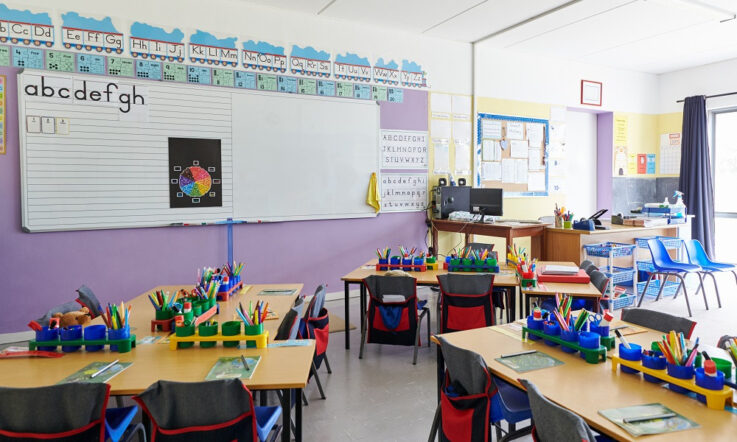There is increasing awareness that children on the autism spectrum can have particular difficulties with communication, social interest and social interaction, which may affect their opportunities to engage with literacy experiences.
New research has investigated the effectiveness of observational tools such as the Early Language and Literacy Classroom Observation (ELLCO) to guide observations of literacy learning for children on the autism spectrum in specialist classrooms.
Details of the study are published in the Australian Journal of Education. It combined use of selected parts of the ELLCO with stimulated recall interviews (using photographs of practices as prompts for reflection and discussion) with 10 teachers across 2 specialist primary schools which had a strong focus on literacy. Findings revealed the limitations of only using observational tools such as the ELLCO to observe best literacy practices in specialist classrooms.
‘Best literacy practices in specialist schools look very different to best practice in regular classrooms,’ lead researcher Professor Sue Walker tells Teacher.
‘We were surprised at the limitations of the ELLCO as an observational tool within specialist classrooms, because this is a tool that is really widely used to observe literacy practices …
‘But there isn’t any real tool around that looks specifically at what the literacy practices are, or the what the literacy environment is, in specialist classrooms catering specifically for children on the autistic spectrum.’
How can autism affect early literacy development?
We know that early development of literacy skills can have a significant long-term impact on later reading success for students, as well as broader impacts for learning across the curriculum. Some core features of autism can present specific challenges in these early years which may mean children have fewer opportunities to engage with literacy experiences, Professor Walker explains.
‘Children on the autism spectrum have specific core autism features. And one of them is social communication. So, particularly difficulties with pragmatic communication and they also have problems with social interest, or social interaction.
‘[They] also seem to have particular problems with comprehension. So while they might be reading quite well, the actual understanding might not be there. So their particular reading level might mask underlying literacy difficulties.’
Supporting literacy skills in specialist classrooms
In their AJE paper, the researchers explore the significance of 2 key dimensions of a classroom literacy environment; the structural dimension and the instructional dimension.
The structural dimension relates to the literacy environment itself, for example, having reading and writing materials, books and environmental print such as signs on walls, lists and calendars freely available in the classroom.
The instructional dimension relates to the specific literacy practices employed by teachers to interact with children while facilitating the literacy environment.
‘Looking at the ELLCO, many of the teaching strategies and structural dimensions we observed would have been deemed as inadequate or even deficient using the ELLCO, but really appropriate in the context that we were observing in the specialist classrooms,’ Professor Walker explains.
‘For example, if I’m talking about the structural dimensions, and having books readily available for children to read, most of the classrooms we observed had books locked away or out of reach. And while that might be classed as deficient on the ELLCO, it actually is really practical in the classroom which children on the autism spectrum who may not be able to interact appropriately with books on their own.’
This does not mean, however, that these literacy materials were inaccessible to children, but were instead provided by teachers when engaging with specific literacy learning.
Designing an appropriate observational tool for specialist classroom literacy environments
A key finding of the study was the need for a specific tool to observe literacy practices in specialist classrooms, taking into account the differences in structural and instructional practices in autism-specific settings.
The researchers argue the potential utility of using a tool such as the ELLCO, when combined with stimulated recall interviews, as a more suitable method capturing teaching practices while highlighting the individual and contextual factors unique to specialist classrooms. Using this method in their own research, the researchers were able to identify several key themes in the literacy environments in the specialist classrooms they observed.
‘We see an observational tool that’s specifically designed for specialist classrooms as a way in which teachers can be supported in guiding their own observations of literacy practices so that they’re able to engage with professional development themselves,’ Professor Walker says, ‘taking into account the contextual features that are present in specialist classrooms and the specific affordances that are available.’
To read more about the study and its findings, you can access the full article published in the Australian Journal of Education, which is freely accessible until 15 August 2022.
References
Walker, S., Clendon, S., Paynter, J., Flückiger, B., Bowen, R., Sullivan, R., & Westerveld, M. (2022). Observing the classroom literacy environment of children on the autism spectrum in specialist classrooms. Australian Journal of Education. 0(0), 1-18. https://doi.org/10.1177%2F00049441221107424
As a specialist teacher, what tools do you use to reflect on your own practice? Are you using methods of evaluation specific to specialist classroom environments?
With colleagues, share some of the instructional and structural practices you have found most effective in helping your students to build their literacy skills.



